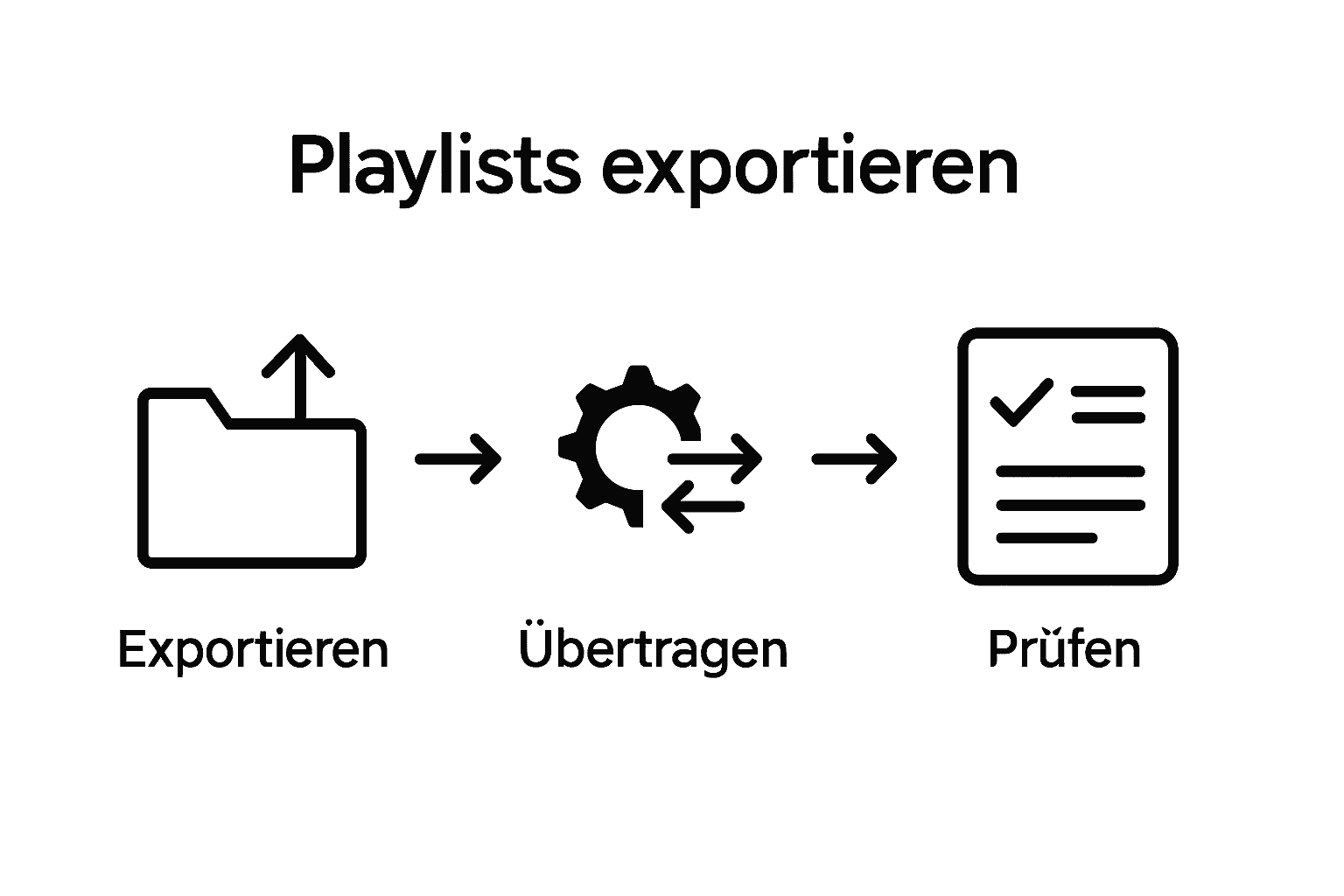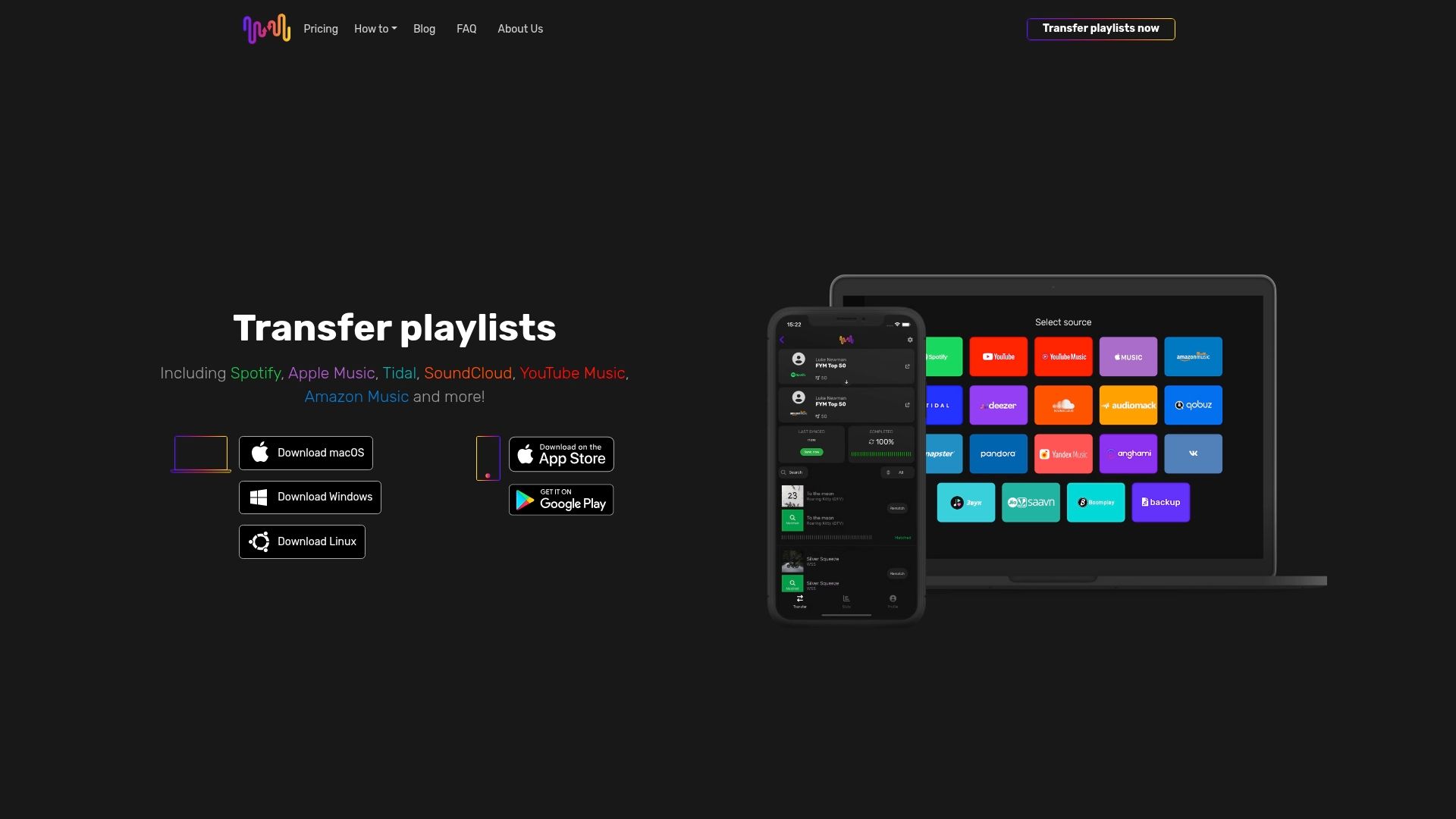Over the years, music lovers often collect a large number of playlists on various streaming services. Many are surprised at how quickly they lose track and how often tracks appear twice or even three times. But hardly anyone knows that almost one in four playlists contains unimportant or outdated songs, which disrupts the listening experience and wastes storage space. Bringing structure to this collection can not only create order, but also make targeted music listening much easier than expected.
Quick summary
| Main point | Explanation |
|---|---|
| 1. Review existing playlists | Take stock of your music playlists to improve overview and planning. |
| 2. Analyze your music library | Categorize tracks by genre and mood to identify redundancies. |
| 3. Choose a management platform | Determine platform requirements and compare different options. |
| 4. Import playlists accurately | Ensure completeness and correct order of tracks when transferring. |
| 5. Optimize playlists for the future | Remove duplicate tracks and regularly adapt playlists to new music tastes. |
Step 1: Review your existing playlists
Before you organize your music collections, you first need to take a comprehensive inventory of your existing playlists. This first step is crucial to gain a clear overview of your musical landscape and effectively plan how to optimize your collection.
Go through your various music platforms systematically. Whether you use Spotify, Apple Music, YouTube Music or other streaming services - list all existing playlists. Pay particular attention to details such as the number of tracks, thematic focus and last used date. Document this information in a central overview, for example in a spreadsheet or a note app.
During this review, you should reflect critically: Which playlists are still relevant? Which ones could be merged or restructured? Identify duplicate tracks, outdated music collections and playlists that no longer match your current listening habits. Our music statistics function can help you gain detailed insights into your music collection.
Pay particular attention to the following aspects when checking your playlist:
- Completeness of the playlist
- Topicality of the music selection
- Correctness of the track order
- Thematic consistency
Once you have completed this analysis, you will have a precise overview of your music collection. You are now ready to take the next steps to optimize and reorganize your playlists.
Step 2: Analyze your music library
After the initial inventory of your playlists, the crucial process of detailed music library analysis now begins. This phase goes beyond a simple listing and aims to understand the deeper structures and patterns of your music collection.
Start with a systematic categorization of your tracks. Identify main genres, moods and eras in your music collection. Pay particular attention to recurring patterns and connections between different playlists. Use streaming platform algorithms or special music statistics tools to discover hidden connections in your music collection.
When analyzing, you should consider the following aspects
- Average number of tracks per playlist
- Most frequent artists and genres
- Age of the stored music
- Average listening time of the tracks
The aim of this analysis is to eliminate redundancies, streamline your music collection and create a clearer structure. Identify playlists with similar tracks that could potentially be merged. Be careful to maintain the emotional and thematic integrity of your music collection.
When carrying out this analysis, it is advisable to take notes and document your findings. This will help you make strategic decisions in the following steps of music organization.
Step 3: Choose a platform for management
After carefully analyzing your music library, the next step is to strategically select a suitable management platform. This decision is crucial for efficient and smooth music organization.
First, define your individual requirements for a music management platform. Consider factors such as user-friendliness, compatibility with your existing streaming services, synchronization capabilities and additional functions. Our transfer function between different music services can help you to switch flexibly between platforms.
When choosing, you should pay attention to the following core criteria:
- Support for multiple music streaming services
- Automatic playlist synchronization
- User-friendly interface
- Security and data protection
- Regular updates and support
Pay particular attention to compatibility with your preferred music services. Not every platform supports all streaming providers equally. Take the time to compare different options and use trial versions. A good management platform should not only meet your current needs, but also provide room for future music collections and preferences.
Below you will find a clear table for choosing the best music management platform based on the decision factors mentioned in the article.
| Criterion | Description | Importance |
|---|---|---|
| User-friendliness | Intuitive usability and easy to get started | High |
| Compatibility | Support for multiple streaming services and devices | Very high |
| Synchronization | Automatic updating of playlists between platforms | High |
| Additional functions | Statistics tools, analysis functions, flexible organization | Medium |
| Data protection | Secure storage of personal music data and playlists | High |
| Updates & support | Ongoing maintenance, support for technical problems | Medium |
At the end of this selection phase, it is advisable to carry out a brief evaluation of your chosen platform.
Check whether all your originally defined requirements are met and whether the platform is intuitive to use. A successful selection forms the basis for effective music organization in the coming years.
Step 4: Import your playlists to the new platform
Now the crucial moment of music organization begins: importing your existing playlists to the selected management platform. This step requires precision and patience to seamlessly transfer your music collection.
First, prepare your source data carefully. Make sure that all playlists are fully exportable and that no important tracks are lost. Our transfer function between different music services can help you to migrate your music collection efficiently and without loss.
Please note the following critical aspects when transferring:
- Completeness of the playlist tracks
- Correct order of the songs
- Metadata and additional information
- Compatibility between streaming services
Pay particular attention to possible compatibility problems between different platforms. Not all tracks can be transferred identically, so it is advisable to monitor the import process carefully. Take time to check every aspect of your music collection after the transfer. Make sure that album artwork, artist information and playlist structures have been transferred correctly.
At the end of the import, carry out a detailed check. Compare the original playlist with the newly imported version. Make sure that all the desired tracks are present and are played in the correct order. A successful transfer forms the basis for your future music organization.

Step 5: Test the imported playlists for functionality
Once your music collection has been imported, a crucial phase begins: the comprehensive functionality test. This step is crucial to ensure that your playlists have been transferred completely and correctly.
Start the test by systematically going through each individual playlist. Don't just listen to the first few tracks, but check the entire playlist for completeness and fidelity. Our statistics function for various music services can help you to quickly identify discrepancies.
Pay attention to the following critical aspects during the functionality check:
- Sequence of the tracks
- Completeness of the playlist
- Sound quality of the individual tracks
- Metadata and album artwork
- Correct playback on different devices
It is particularly important to check for compatibility issues. Some tracks may not be transferable due to license rights or regional restrictions. In such cases, you will need to manually find replacement tracks or adjust the playlist. Take the time to test each playlist thoroughly - on your computer, smartphone and other playback devices.
The following table recommends a structured testing process to ensure the complete and correct transfer of your playlists after import.
| Checkpoint | What to check? | Why important? |
|---|---|---|
| Sequence of tracks | Are the start, middle and end of the playlist correct? | For planned and familiar sequences |
| Completeness | Have all songs been transferred? | No song loss |
| Sound quality | Are songs playable without errors? | Listening pleasure is preserved |
| Metadata/album cover | Are the artist, title and cover correct? | Overview & recognition |
| Device compatibility | Function tested on smartphone and PC? | Flexible access, no errors |
| License/availability | Find missing or locked tracks | Search for alternatives |

At the end of the test process, it is advisable to create detailed documentation. Make a note of any deviations or problems that occurred during the test. This will not only help you with the current music organization, but also with future playlist migrations.
Step 6: Optimize your playlists for future use
After the successful transfer and functionality test, the strategic playlist optimization phase now begins. The aim is not only to organize your music collection, but also to prepare it intelligently for future use.
Start with a critical inventory. Remove duplicate tracks, clean up metadata and create thematically clear playlist structures. Our YouTube Music statistics function can help you analyze your music listening patterns and optimize playlists in a targeted manner.
Focus on the following key aspects during optimization:
- Consistent genre assignment
- Logical playlist sequences
- Removal of outdated or no longer relevant tracks
- Addition of new, suitable music tracks
Keep in mind that musical tastes develop dynamically. Schedule regular playlist revisions, ideally every three to six months. Use algorithms and recommendation systems on your streaming platform to discover new, suitable tracks. Experiment with intelligent playlist structures that adapt flexibly to your changing musical preferences.
To complete the optimization process, it is advisable to develop a backup strategy. Save important playlist configurations so that you can react quickly in the event of system changes or unexpected data loss. A well-maintained music collection is more than just a collection of tracks - it is a dynamic, personalized sound universe.
Transfer your playlists without effort - perfect your music organization now
Have you already started to sort your playlists with a lot of effort or analyzed the clutter of outdated music collections? The challenges from your article such as redundant tracks, inconsistent structures and switching between streaming services are frustrating. You often have to rebuild playlists manually or even lose cherished music collections. Your time and memories are precious - don't let complicated music management get in the way of your music enjoyment.

Discover the simple solution with Free Your Music. Transfer your existing playlists between Spotify, Apple Music, YouTube Music and many other services with just a few clicks. Experience secure and fast playlist transfer without data loss. Benefit from automatic synchronization and always retain full control over your collection. Take advantage of this today. Start now at https://freeyourmusic.com before old-fashioned methods continue to rob you of valuable time. Your optimized playlist is already waiting for you.
Frequently asked questions
How can I effectively check my existing playlists?
To check your playlists effectively, you should take a comprehensive inventory of your music on various platforms. Document the number of tracks, thematic focus and last date used in a central overview.
What aspects should I consider when analyzing my music library?
When analyzing your music library, you should consider main genres, moods, eras, the average number of tracks per playlist as well as frequent artists and genres. This information will help you identify redundancies and optimize the structure of your collection.
How do I choose the best platform to manage my music?
Define your requirements for a music management platform, e.g. ease of use, compatibility with streaming services and synchronization capabilities. Compare different options and use trial versions to make the best choice.
What should I consider when importing my playlists to a new platform?
Make sure that all playlists are fully exportable, including the correct order of songs and metadata. Monitor the import process carefully to ensure that everything has been transferred correctly.






